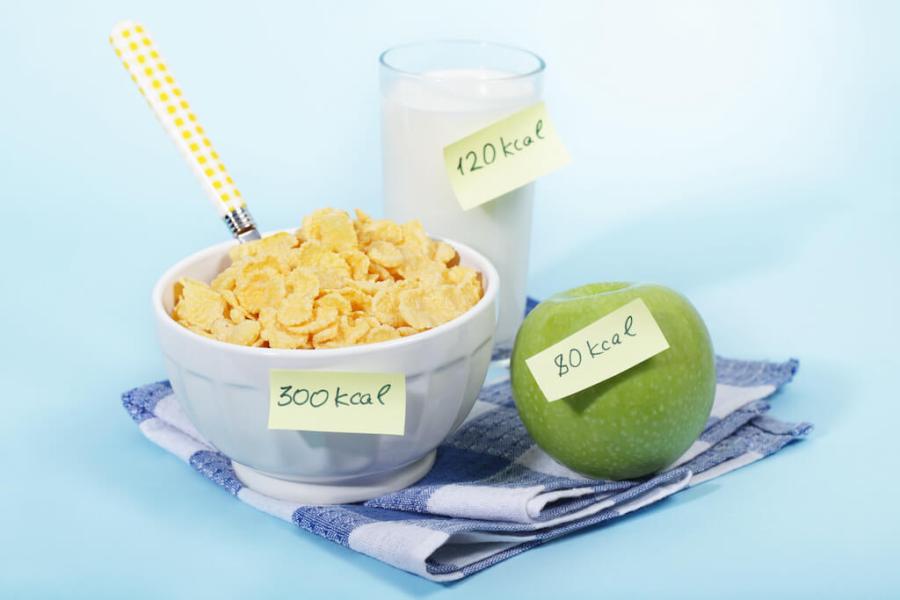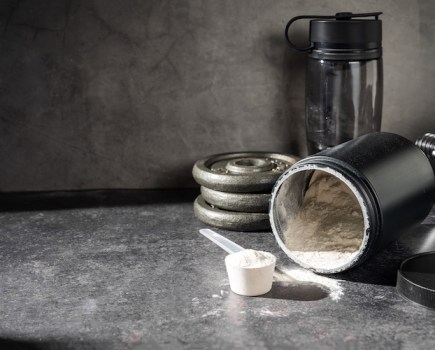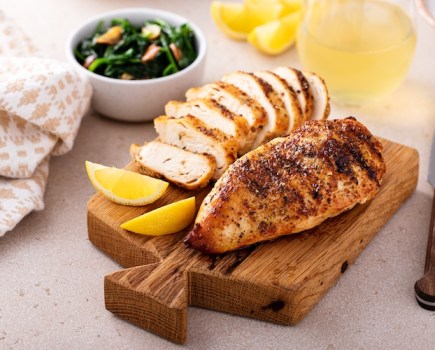Find out how to track calories to slim down or bulk up with our expert guide…
While the process can feel impossibly hard, the concept of either losing belly fat (or gaining weight) couldn’t be simpler.
If you consume more calories than you burn, you will put on weight; if you burn more than you consume, you’ll lose it. Easy.
Of course, tracking those calories in a reliable fashion requires some attention to detail. Which is where a calorie-tracking app like MyFitnessPal can help.
Undoubtedly the most renowned food-tracking app on the market, MyFitnessPal has around 200 million users.
And the concept is pretty straightforward: you build a profile, MyFitnessPal gives you a calorie and macro target, and by adding in the foods you eat each day, the aim is to hit this target in order to see results.
Naturally, though, if it seems too good to be true, it probably is. Many of us are using MyFitnessPal incorrectly, or may simply encounter problems.
So we checked in with the experts to find out how to track calories correctly.
RELATED: 55 ways to eat better
How to track calories with MyFitnessPal
If you type ‘brown bread’ into MyFitnessPal, or ‘lasagne’, you’ll be inundated with brands and wide fluctuations in calorie counts. Different brands will add different ingredients to their seemingly similar foods.
It may seem easier to pick the lowest-calorie option from the choices available, but that can lead to a flawed calorie count.
Added to this, Charlotte Fisher, nutritionist at Marvin’s Den, says that there are often inaccuracies on food labels:
“There’s a 10% tolerance on food labelling, and even seasonal variation in the energy content of your food. These factors make tracking a ‘best guess’ at most.”
Always log liquid calories on MyFitnessPal
Unfortunately, the calories in certain drinks can be pretty high. That full-fat milk on your cereal? Around 150 calories. A cup of orange juice? That’s another 100kcals. The ‘one’ beer after work? Each pint packs in over 200 calories.
“It’s easy to ignore liquid calories as they’re easy and quick to consume,” says Rob Hobson, Healthspan’s Head of Nutrition. “But these calories do count and if you’re tracking seriously, then they need to be included.”
Instead, measure your liquids out into measuring cups before you consume them and add them to MyFitnessPal. Hobson also adds that these liquid calories normally come from sugar, which can obviously play havoc with blood sugar levels. “That can lead to hunger pangs and might promote mid-afternoon tiredness and snacking,” he adds.
How to track calories: remember they aren’t all equal
Of course, fundamentally calories are the same. But the way food reacts in your body – and the impact it has on hormones and energy – isn’t taken into account on MyFitnessPal. According to Hobson, while there is truth to the fact that creating a calorie deficit can lead to weight loss, the concept is somewhat misguided:
“How your body burns calories depends on lots of factors including the type of food, metabolism and even gut bacteria. That means everyone is different, so you can eat the exact same number of calories as someone else but get a different outcome when it comes to weight loss.”
“Those who track calories also need to remember that while an avocado and a Kit Kat Chunky might have similar calories, the calories coming from a chocolate bar are much higher in sugar,” adds Patrick Dooley, trainer at John Reed. “So be aware of macronutrients and that an avocado contains much healthier fats.”
Quality can trump quantity when it comes to calories
Which leads to this point… “When focusing on calorie intake,” says Dr Aria, a high-performance psychologist and behaviour change expert (dr-aria.com), “some people then overlook the quality and nutritional value of foods.”
For good health generally, we need to be consuming nutritionally dense foods, but MyFitnessPal won’t know the difference between the carbs in an apple and the carbs in a croissant. We don’t need to tell you which one contains a greater amount of health benefits…
Processed food lacking in nutrition can also leave your body craving more food as it seeks out the vitamins and minerals it needs. In one metabolic study, participants were split into two groups and given meals with an identical number of calories, sugar, fat, fibre and sodium, with one group tucking into ultra-processed foods, and the other, unprocessed. “Whoever was in the ultra-processed group tended to eat 500 calories more per day and gained weight,” explains Dr Aria.
Put simply, as Hobson says, “Food quality should be made a priority when choosing what to eat.”
Why you shouldn’t log your exercise on MyFitnessPal
Upon joining MFP, you’ll typically be asked to enter your daily activity levels from sedentary (zero exercise), to very active (tough gym sessions and an active job, for example). So, your ‘exercise’ has technically already been accounted for in your daily calorie suggestion.
Plus, when most people track exercise, Dr Aria says that we often overestimate the number of calories we burn: “Researchers in Canada found that ‘normal weight’ men and women who expended 200 calories by walking briskly estimated that they had burned 825 calories on average. When asked to then eat the number of calories that they thought they had used up in a buffet-style setting, participants ate two to three times more calories than they burned, overeating by around 150-550 calories.”
Of course, if your goal is to increase strength and muscle size, then eating at calorie maintenance or surplus will help achieve your goals – with around 1.2g to 1.7g of protein needed per day per kilogram of bodyweight. This protein-for-strength scenario might not be factored into your MyFitnessPal calorie equation.
Certain exercises do also need more calories than others, which might not necessarily be noted when adding into MFP. Fisher says that endurance exercises like running, swimming, and cycling tend to use the most calories, while different positions in various sports also have different energy requirements – a fullback in football, for example, will tend to do more running than a centre back.”
As for resistance training, Fisher says it burns relatively few calories in comparison. Also, the ‘afterburn effect’ (EPOC) – calories burned after working out – “isn’t as exaggerated as some might like to think.”
Your weight changes on daily basis
For many reasons, weight fluctuates from day to day. You might sweat more on a hot day, or a particular food might leave you bloated and carrying extra water weight. Illness and stress can also impact your weight, and naturally these aren’t factored into MyFitnessPal. Any fluctuations on the scales can then lead to the unnecessary increase or decrease in calories.
Hobson says it’s best to weigh yourself in the morning, at the same time, every week. If you’re sure you’re tracking correctly and consistently, to a correct calorie count, you will see results.
Don’t cut too many calories at once
Ultimately, the question you need to be asking is, how sustainable is your new low calorie count? For months at a time? It’s unlikely you’ll keep it up, especially with side effects of low mood, fatigue, and also potential physical issues such as hair loss and acne.
Why calorie tracking might not be right for you
Cooking, eating, tidying… these take time in themselves. Throw in weighing, measuring and logging and calorie tracking can feel like another job in itself. “Tracking is incredibly time-consuming,” says Fisher, “meaning that people are likely to get bored and frustrated with the process and more likely to rush through it, making errors in the process.”
So should YOU be calorie tracking on MyFitnessPal? It’s certainly not for everyone. Fisher says that some people simply don’t want to do it. You may soon become resentful of something that causes further stress and depletes you of even more time.
“People with a history of disordered eating or eating disorders shouldn’t be encouraged to track either,” she adds. “Food is about so much more than just numbers. Focusing excessively on the numbers can lead to obsessing over hitting those numbers, cancelling social occasions for worry over not hitting those numbers, only eating a limited range foods that are easy to track, and falling into disordered eating habits like bingeing and restricting in the worst cases.”
There are also alternatives to MFP. “Research from Stanford University shows that having an eating pattern in which you don’t feel deprived and can stick with – and that has more whole, natural foods and fewer refined, processed ones – is most important for weight loss,” says Dr Aria. “You can shift your focus from counting and restricting calories to nourishing your body with healthy foods that you love to eat.”
Protein at every meal, alongside fruits, vegetables, complex carbohydrates and controlled portions of ‘healthy’ fats, is a good way to ensure you’re eating a nutrient-rich diet. Fisher adds managing portion sizes is also a good alternative to tracking.
How to track calories with MyFitnessPal
- Track as you eat. It’s easy to forget the handful of nuts you demolished or the two biscuits you ate mid-morning.
- Focus on quality food. Ultimately, your health comes first. Carbs from quinoa benefit you more than carbs from cake.
- Go slowly. Rome wasn’t built in a day, and your body goals will take time. Slow and consistent over fast and unachievable, any day.
- Track using the scanner if you can. This is useful for accuracy on branded products.
- Add in treats at the start of the day. If you’ve got a sweet tooth, or you know you’ll be out boozing that night, adding it in early means you know what remaining calories and macros you have to work with.
How to work out how many calories you need
Rob Hobson recommends the Harris Benedict equation, which works out your basal metabolic rate (BMR): the number of calories you would need if you simply slept all day. To work it out, follow the equation below.
BMR = 66.5 + (13.75 x weight in kg) + (5.003 x height in cm) – (6.75 x age)
So, if you were a 30-year-old, 75kg, 180cm tall man, it would look like this:
BMR = 66.5 + (13.75 x 75) + (5.003 x 180) – (6.75 x 30) = 1729.29
Then, multiply that number by your level of activity to calculate your daily maintenance calories (but be honest about just how active you are…):
- Sedentary or light activity x 1.4
- Moderately active x 1.7
- Vigorously active x 2
Words: Lucy Gornall






